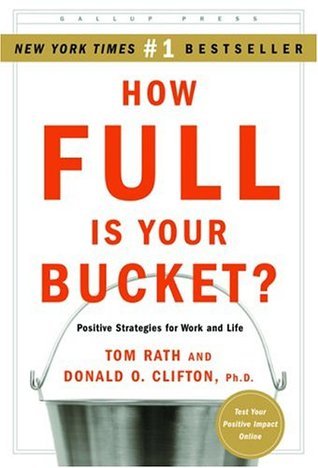What do you think?
Rate this book


Did that person -- your spouse, best friend, co-worker, or even a stranger -- "fill your bucket" by making you more positive? Or did that person "dip from your bucket," leaving you more negative than before?
How Full Is Your Bucket? reveals how even the briefest interactions affect your relationships, productivity, health, and longevity.
Organized around a simple metaphor of a dipper and a bucket, and grounded in 50 years of research, this audiobook will show you how to greatly increase the positive moments in your work and your life while reducing the negative.
Filled with discoveries, powerful strategies, and engaging stories, How Full Is Your Bucket? is sure to inspire lasting chances and has all the makings of a timeless classic.
96 pages, Kindle Edition
First published July 6, 2004